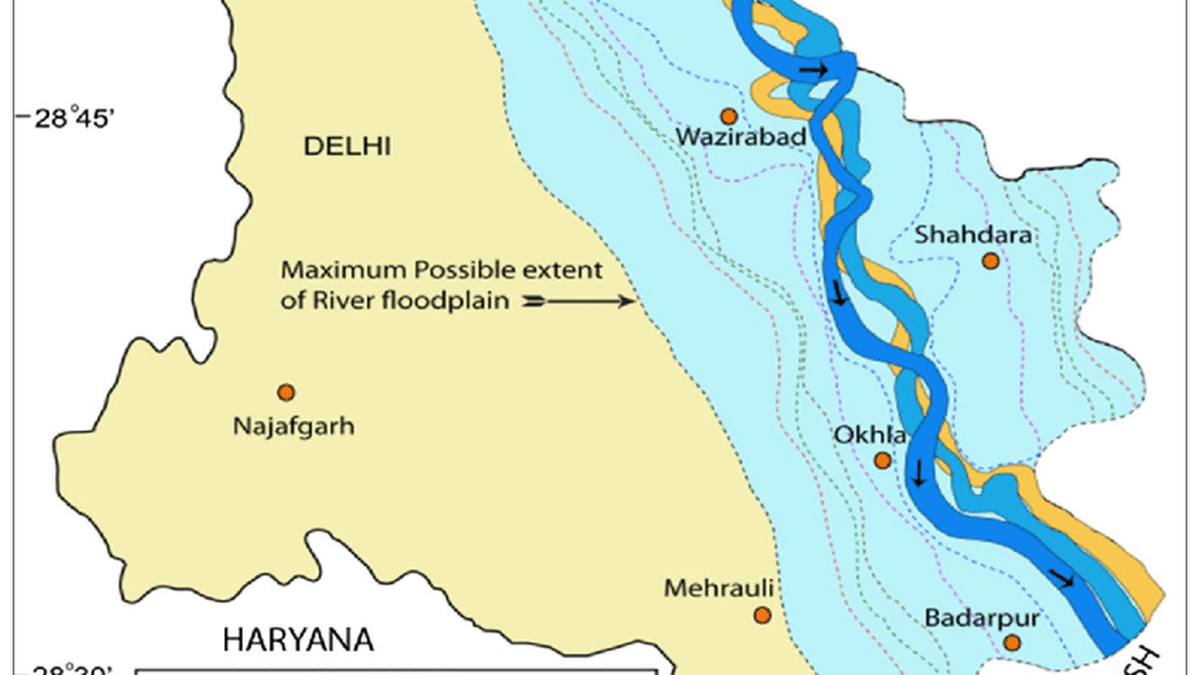Context
-
Humanity is struggling with a shortage of water as well as an excess.
-
As the World Health Organization stated, “Floods are increasing in frequency and intensity, and the frequency and intensity of extreme precipitation is expected to continue to increase due to climate change.”
-
Massive Floods in recent past
- In 2022 devastating floods in Pakistan claimed 1,700 lives and affected 33 million people.
- The 2013 floods in Uttarakhand, the 2014 floods in the Kashmir Valley, the 2015 floods in Chennai, and the 2017 floods in Gujarat.
- This year too, we saw the devastating effects of rain-induced floods and landslides in several districts of Himachal Pradesh.
- The Yamuna water level crossed the 208.5 metre mark, breaking a 45-year-old record.


Key Facts on Floodplains
- As per the Geological Survey of India, over 40 million hectares, which is nearly 12% of the total land area of India, is prone to floods.
- Flooding affects the economy too — Indian cities are projected to contribute to 75% of the GDP by 2030.
Cause of Concerns
- Cities expand fast and mostly in a haphazard manner, which makes them vulnerable to disasters.
- Illegal construction work in floodplains reduces the capacity of rivers to contain a high level of water within their banks. This is especially the case during heavy rainfall when water flows down from upper catchment areas. Thus, the tendency to occupy floodplains results in flooding.
- Disaster risks across the world are found to be situated within environmental and natural resource governance.
- While the protection strategy includes technical measures such as the laying of dikes, temporary flood defence walls, and polders, the key elements of the management strategy are retention of water and restoration of floodplains.
- In India, there are large-scale encroachments on floodplains. These increase the frequency of floods and the damage caused by them.
- Floods do not merely show the fury of nature; they are also often brought about by climate change-induced rainfall. This especially impacts mountainous regions such as the Himalayas.
- Laws in India which are meant to protect the environment are not implemented.
- While there are central policy measures to protect floodplains, they are mostly non-binding on States.
- No State in India has been able to prevent encroachment on floodplains.
Case study
- Uttarakhand has been neglecting eco-sensitive floodplains by allowing the construction of guest houses and hotels on the river front to promote tourism and boost its economy.
- It is also unclear whether environmental impact assessments are done properly in the State.
- The Uttaranchal River Valley (Development and Management) Act, 2005, is meant to regulate mining and construction in the river valley. But reports indicate that there is rampant mining and construction activity with little regard for the environment.
Way Forward
- Protecting and preserving ecosystems such as wetlands, forests, lakes, and coastal areas in reducing physical exposure to natural hazards such as floods, landslides or avalanches by serving as buffers.
- Flood plain restoration and water retention of water bodies are considered to be pillars against flooding.
- Climate change adaptation is a cross-sectoral issue. It involves laws relating to land use, preservation of water bodies, coastal regulations, and environmental impact assessment.
- A multitude of laws need to be integrated into a coherent framework.
- The purpose will not be served if, for instance, a law to tackle climate change is passed by Parliament while changes to land use and the preservation of water bodies are not made.
Conclusion
-
However, achieving this requires strong political will. Populist leaders tend to refrain from implementing “green” policies. This must change if we want to save lives and livelihoods and safeguard infrastructure.
Source: TH
Visit Abhiyan PEDIA (One of the Most Followed / Recommended) for UPSC Revisions: Click Here
IAS Abhiyan is now on Telegram: Click on the Below link to Join our Channels to stay Updated
IAS Abhiyan Official: Click Here to Join
For UPSC Mains Value Edition (Facts, Quotes, Best Practices, Case Studies): Click Here to Join
